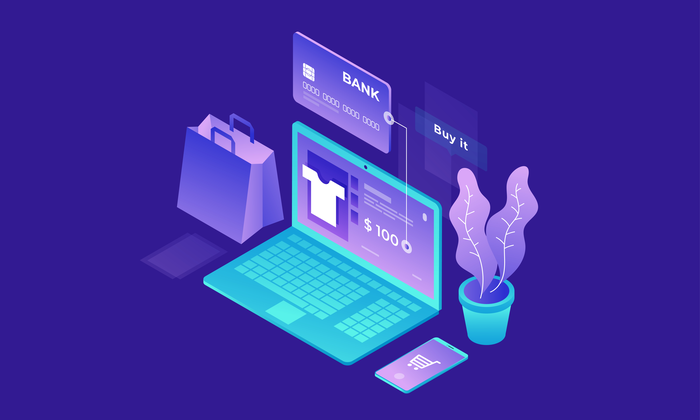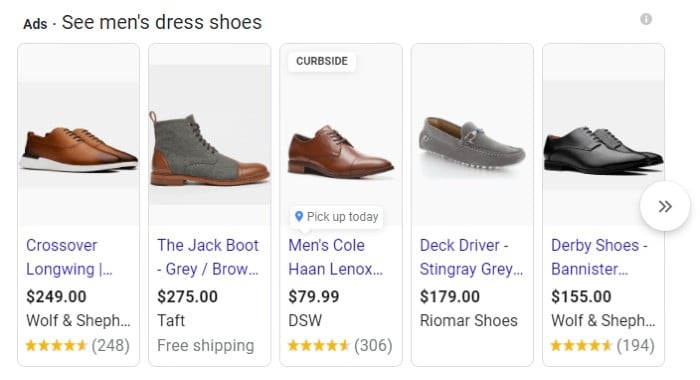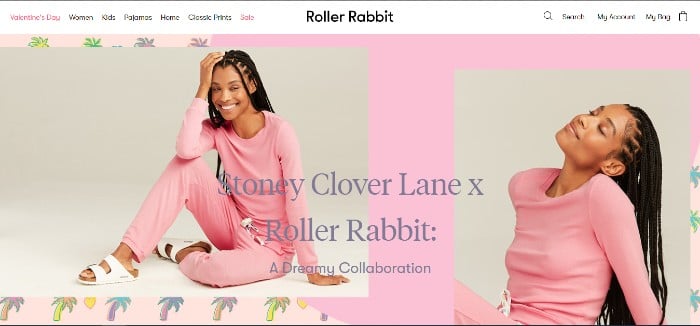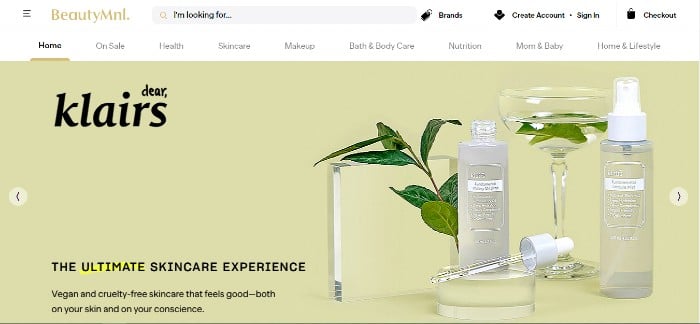
The move from brick-and-mortar retail shopping to e-commerce sites has continued steadily over the last decade.
Between 2014 and 2023, global retail e-commerce sales are expected to increase by $5.2 billion. As online shopping integrates seamlessly with search and social platforms and as UX improves, more users are inclined to make their purchases online.
This shift has made retail brands rethink their marketing and advertising strategies, allocating more of their budgets toward SEO and paid search campaigns. In 2020, advertisers spent almost $200 billion in paid search ads, with retail spending over $15 billion, and this number is expected to increase moving forward.
If you’re behind in your paid search and social ad spend, don’t worry. Paid ads for e-commerce sales are pretty easy to jump into, and you’re likely to see faster results than you would with SEO.
In this article, I’ll discuss everything you need to know to increase e-commerce sales for your retail brand through paid search and social ads.
How Can Paid Ads Help You Reach Your E-Commerce Sales Goals?
Paid search across social, as well as through Google Ads and Bing Ads, gets a lot of attention and helps pull leads through the sales funnel.
For example, Facebook accounts for about 80 percent of U.S. social referral share to e-commerce sites.
Meanwhile, Instagram can reach 1.16 billion users. Over on Pinterest, 58 percent of women use Pinterest to make shopping and purchasing decisions.
SEO takes time to build awareness and pull people down the marketing funnel. Your content may not appear right away, or it may not target the right audience.
Paid search, on the other hand, gives you more immediate results by targeting the right audience right away. You can use it for any number of goals, from awareness to subscription sign-ups to conversions.
When it comes to e-commerce sales, paid search gives you a lot of flexibility, too.
Think about all the various platforms out there and all the different ways to reach your audience. Take, for example, Instagram Shopping. According to Instagram, 60 percent of users they surveyed discover new products through Instagram.
Using Instagram Ads, you can create posts with product tags that link directly to a product details page, helping boost conversions.
I’m not just talking about simple product features. Brands are creating drops: exclusive, limited-time product launches on Instagram that link directly to a shopping page.
McDonald’s Taiwan created a drop for their jet-black burger, a collaboration with designer Apujan.

Marketers are creating product guides through Instagram Guides that link to product pages, as well.
Sephora created Your Guide to JLo Beauty, featuring seven products to help users get the same look.

Each product links to a shopping page that allows users to purchase products from JLo’s beauty line via Sephora.

In instances like this, paid ads become part of the shopping experience. They blend seamlessly with your site to make it that much easier to convert leads, increase your e-commerce sales, and retain repeat customers.
Differences Between Optimizing for Organic Traffic and Paid Ads for E-Commerce Sales
Organic and paid search are two different animals that require completely different approaches. Here are some of the main differences.
Keywords
Paid ads take the guesswork out of keywords. With organic search, you’re making educated predictions on keywords that you think will do well for your brand, and then you’re building content against them. From there, it’s a waiting game to see if your content picks up traffic.
With paid search, you see much more immediate results because you’re paying for keywords that are already relevant to your target audience.
One-third of people surveyed by Clutch said they click on paid search ads because it answers their search query directly.
Of course, the more search traffic a keyword gets, the more you’ll need to pay to get your content to show up for that keyword.
Audience
With organic search, you’re targeting an audience across relevant platforms. However, with paid ads, each of those platforms allows you to focus on very niche audiences. You can target not only a particular demographic or psychographic but also a location or customer intent.
You can even go so far as to target people who went to your site but didn’t make a purchase, as you’ll see in the case studies below.
Effort
Both SEO and paid search and social ads require time and effort. With SEO, you monitor your content over time to see how it performs, and then you adjust your content as necessary.
With paid, the need for attention is more immediate. Paid search and social ads give you a lot of data. The key to a successful campaign is to monitor that data constantly. Marketers pore over click-through rates and cost per conversion (CPC), conducting A/B tests on different iterations of the same campaign to see which gives them a better ROAS.
Tips for Creating Great Paid Search and Social Ad Campaigns for Retail Marketers
First things first: Before you create anything, take a deep dive into your target audience. Understand who they are, how they search and shop for items, and where they hang out online.
Next, choose the platforms that will serve your brand and your sales goals best. For example, AdEspresso points out that Google Ads generally drives higher sales conversions, while Facebook is better used for raising brand awareness.
Create a buyer persona that includes not only who your audience is but what their pain points are. What are the problems your product can solve for them? Your ads should address those problems directly.
Marketers, for example, may see an ad like this one from Hotjar in their Facebook feed:

Notice the tagline at the top. It directly addresses a pain point many marketers feel: the overwhelming amount of data we get.
Next, include a high-quality, engaging image (or two) or a video. No matter what platform you’re working with, you’ll need images or videos that capture your audience. On Google Ads, that means product images that appear in Google Shopping.

Finally, paid social ads include a CTA. In this example, Hotjar has included a CTA and a sign-up button.
How you create a great ad depends very much on the platform you choose. I’ve discussed different tactics you can use on Instagram, Facebook, and Google Ads, but every platform has a unique set of features to boost conversions.
Snapchat, for example, has 265 million active users every day. Their ad platform allows brands to create, launch, and monitor ad campaigns right from the platform. By installing a Snapchat Pixel, marketers can track their ads in real-time.
A unique aspect of Snapchat is that 64 percent of users view content with the sound on. So, while ads with captions work well for Facebook, marketers should pay attention to their audio track in their Snapchat ads.
How to Ensure Your Paid Ads Convert New Customers and Drive E-Commerce Sales
Here are some other tips for creating great paid search and social campaigns to increase your e-commerce sales:
- Link to a product landing page for specific product ads: Landing pages should be optimized, with an easy UI that drives users to buy your product.
- If conversions are your goal, aim for keywords with high buyer intent: This is especially true for Google Ads. Keywords such as purchasing an electric car can help convert more leads than electric car, for example.
- Use retargeting tools: Google Ads, Facebook, and many other platforms provide retargeting to send highly targeted ads to users who acted, such as clicking an ad, but weren’t considered a conversion.
- Target cart abandonment: Build custom ads for targeting users who abandoned their carts.
- A/B test: Don’t just settle on one ad or one campaign. Test videos against images, one CTA against another, one type of ad placement against another, and so on.
Case Studies: E-Commerce Companies That Increased Sales Through Paid Ads
I’ve given you the steps to create great paid ad campaigns for retail marketing and some tips on how to optimize. Now, let’s look at some case studies to see how brands are putting those steps and tips into practice to boost their e-commerce sales.
Roller Rabbit: Creating an Integrated Marketing Campaign

Clothing and bedding company Roller Rabbit had a problem. They needed to create awareness and grow revenue with a budget that had been cut by 25 percent while having difficulty tracking revenue data. So, they hired digital marketing firm Major Tom to create an integrated marketing campaign that included paid ads across search and social.
The goals were to reach a ROAS of 400 percent while matching their holiday season revenue and transaction goals.
First, Major Tom conducted a full audit of their data from analytics and CRM to refine their reporting strategy.
Next, they came up with an integrated paid media strategy that targeted high-impact channels, including Facebook, Google Ads, and Microsoft Ads. With reporting issues fixed and ads in place, Major Tom began to identify previously unknown audiences for the Roller Rabbit brand.
This new data allowed them to focus their targeting by expanding into smaller, more targeted ad groups and shift focus to the highest-converting categories. They also took the following steps to reach Roller Rabbit’s goals:
- filled in missing opportunities
- removed overlapping targeting
- focused on special promotions and sales
- separated dynamic search ads into their category to better control spending and targeting
As a result, Roller Rabbit saw a 95 percent increase in paid media-generated revenue, and their e-commerce conversion rates increased by 176 percent. They exceeded transaction goals by 98 percent. Their ROAS on Google was 775 percent, while their Facebook ROAS was a staggering 1124 percent.
BeautyMNL: Using Dynamic Facebook Ads

BeautyMNL is a women’s lifestyle company in the Philippines that offers everything from cosmetics and skincare to wellness and fitness products. They wanted to scale their marketing efficiently to boost brand awareness and online sales.
To achieve that goal, they turned to Facebook’s dynamic ads and created a single test campaign. With Facebook’s dynamic ads, brands upload several products from their catalog, and Facebook automatically places each one in relevant newsfeeds.
BeautyMNL chose to use the collection functionality, which features a hero image and several smaller images underneath. Instead of an image, BeautyMNL placed a video in the hero spot.
They targeted their campaign to people who had been to their e-commerce site but hadn’t made a purchase, which marketers can do using Facebook Retargeting.
From that campaign, which ran for three weeks, they saw a 38 percent lift in purchases and an 18 percent lift in sales compared to a similar period with no ads.
Conclusion
Investing in a killer paid ad campaign not only raises awareness of your brand but can also pull users to your e-commerce site and make the shopping experience easier than ever for them.
That translates into more conversions and higher sales for you.
With so many options across platforms, now is the time to get creative and put together ads for paid search and social that delight your audience and speak directly to their pain points.
Want my team to do your paid search and social ad campaigns for you? Fill out our consulting form.
What kinds of paid ads do you think would work best for your brand? How can you capture those leads and convert them to paying customers through paid search and social?
The post How to Increase E-Commerce Sales Through Paid Search & Social Media Campaigns appeared first on Neil Patel.
from Blog – Neil Patel https://ift.tt/3u9Lp8p
via IFTTT
No comments:
Post a Comment